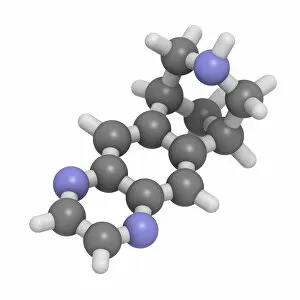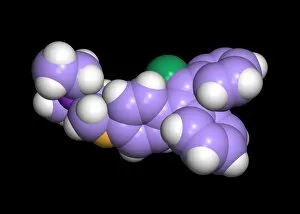Agonist Collection
"Unlocking the Cell's Response: The Power Drugs" In the fascinating world of pharmacology, agonist drugs hold a key role in triggering cellular reactions
All Professionally Made to Order for Quick Shipping
"Unlocking the Cell's Response: The Power Drugs" In the fascinating world of pharmacology, agonist drugs hold a key role in triggering cellular reactions. Through an intricate dance with receptors, these drugs can elicit specific responses within our bodies. Take a closer look at the illustration on the left, showcasing how an agonist drug interacts with cells. As it binds to its designated receptor site, a cascade of events is set into motion – like unlocking a door and activating various cellular pathways. This process leads to desired effects such as pain relief or mood elevation. Contrastingly, on the right side of this cross-section biomedical illustration lies an antagonist drug – acting as a roadblock rather than opening doors for cellular response. It competes with agonists for receptor sites but fails to trigger any significant reaction. One notable example is Varenicline, a smoking cessation drug that acts as an agonist by targeting nicotine receptors in our brain. By mimicking nicotine's effects without causing addiction or harmful consequences, Varenicline helps individuals overcome their tobacco dependence. Moving beyond smoking cessation aids, let us delve into cannabis-related compounds represented by molecular models here. Cannabidiol (CBD) stands out among them due to its non-psychoactive nature and potential therapeutic benefits ranging from anxiety reduction to pain management. Meanwhile, Tetrahydrocannabinol (THC), another molecule found in cannabis plants depicted multiple times here due to its significance in recreational marijuana use and medicinal applications alike. THC acts as both an agonist and antagonist depending on different receptor systems within our body. Shifting gears towards other medical realms, Raloxifene emerges as an osteoporosis drug molecule worth exploring further. Acting selectively as an estrogen receptor modulator (SERM), it exhibits both agonistic and antagonistic properties depending on target tissues – promoting bone health while inhibiting breast cancer cell growth simultaneously.







